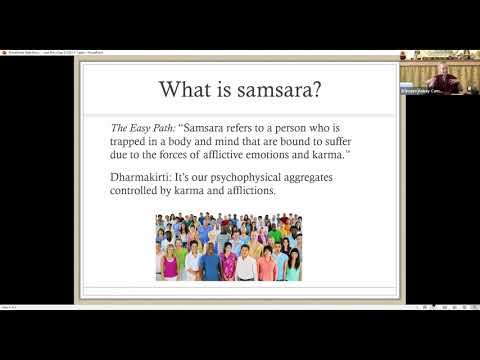Auxiliary afflictions in the Pali tradition
26 Samsara, Nirvana, and Buddha Nature
Part of an ongoing series of teachings (retreat and Friday) based on the book Samsara, Nirvana, and Buddha Nature, the third volume in The Library of Wisdom and Compassion series by His Holiness the Dalai Lama and Venerable Thubten Chodron.
- Covetousness and greed, malice, wrath, resentment
- Three ways in which resentment grows
- Contempt, insolence, jealousy
- Identifying the mental states in our own mind
- Miserliness, deceit, obstinacy, competition
- Arrogance, conceit, haughtiness, heedlessness
- Seeing how these mental states are related
Samsara, Nirvana, and Buddha Nature 26: Auxiliary Afflictions in the Pali Tradition (download)
Contemplation points
- Consider each of the 16 auxiliary afflictions according to the Pali tradition (covetousness and greed, malice, wrath, resentment, contempt, insolence, jealousy, miserliness, pretensions, deceit, obstinacy, competition, arrogance, conceit, haughtiness, and heedlessness). How do you see them operate in your own life? Be specific in your examples.
- Some people have difficulty identifying emotions because when they were children, their parents did not name emotions or discuss them very much. Some ways to learn to identify your emotions are to become aware of (a) sensations in your body, (b) the flow or “texture” of your breath, and (c) the “tone” or mood in your mind. Using these techniques, try to identify instances of each of the auxiliary afflictions in your life.
- What are the triggers that make these arise?
- Examine the short- and long-term results of manifest auxiliary afflictions in your life.
- Develop a strong determination to counteract these afflictions by cultivating mental states that see the object in the opposite way.
Venerable Thubten Chodron
Venerable Chodron emphasizes the practical application of Buddha’s teachings in our daily lives and is especially skilled at explaining them in ways easily understood and practiced by Westerners. She is well known for her warm, humorous, and lucid teachings. She was ordained as a Buddhist nun in 1977 by Kyabje Ling Rinpoche in Dharamsala, India, and in 1986 she received bhikshuni (full) ordination in Taiwan. Read her full bio.


